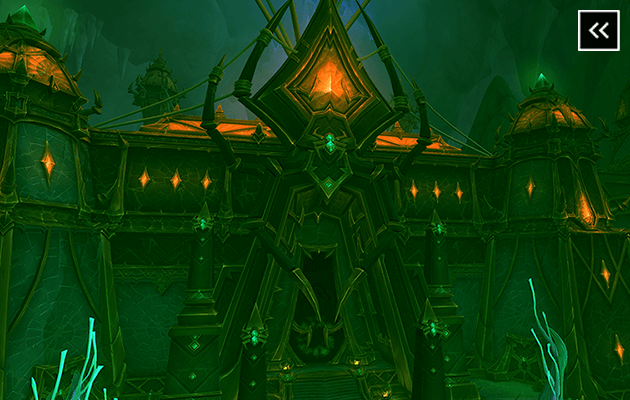Introduction
The allure of online raids in games like World of Warcraft lies not just in the thrill of battle or the promise of epic loot, but in the complex dance of strategy and cooperation they require. These multi-player challenges are akin to orchestrating a small army, where each player's role is crucial and must be executed with precision. Whether you're a seasoned raider or gearing up for your first raid, understanding the dynamics of effective team coordination can transform your gaming experience from frustrating to exhilarating.
Imagine yourself at the helm of a raid group, where success hinges not just on your ability to deal damage, but on your strategic foresight and your team's ability to function as a cohesive unit. This guide will delve into the nuances of raid preparation, team roles, execution, and review, providing you with a comprehensive strategy to enhance your raid leadership and performance. From the initial planning stages to the post-raid analysis, every piece of advice here is geared towards fostering better communication, enhancing strategic understanding, and ensuring that your team can conquer even the most daunting challenges, like those found in WoW Raids https://conquestcapped.com/wow/nerubar-palace/.
Understanding Raid Dynamics
Before you can lead effectively, you must understand what you're leading. Raids are structured battles against powerful non-player characters (NPCs) within the game, typically requiring anywhere from 10 to 25 players, each fulfilling specific roles. These encounters are not just about hacking away at a boss; they require a meticulous approach to team composition, understanding boss mechanics, and executing strategies that play on the strengths of your team while mitigating its weaknesses.
Key Components of a Raid
- Boss Mechanics: Each raid boss has a unique set of abilities that can often change or escalate as the fight progresses. Knowledge of these mechanics is crucial to formulating a successful strategy.
- Team Roles: Typically, raid teams are composed of tanks, healers, and damage dealers (DPS). Each role is vital, and understanding the nuances of these roles can greatly impact the raid's outcome.
- Environment: Many raid encounters include environmental challenges, such as avoiding certain areas of the battlefield or interacting with objects that can either aid or hinder the team.
Building an Effective Raid Team
The composition of your raid team can make or break your success. It's about more than just gathering the required number of players; it's about assembling a group whose abilities and character classes complement each other.
Tips for Team Building
- Balance Your Roles: Ensure a good mix of tanks, healers, and DPS, but also consider the specific classes and their abilities. Some classes can offer unique buffs or utilities that can be crucial in certain encounters.
- Player Skill and Experience: While it's important to have skilled players, it's also vital to consider the experience and familiarity they have with raid content. A mix of veterans and newer players can often work well, with veterans mentoring the less experienced.
- Communication Tools: Effective communication is key in raids. Tools like voice chat are essential for coordinating strategies and calling out important cues during the battle.
Strategic Planning Before the Raid
Success in raids often begins long before the first enemy is engaged. Pre-raid planning involves setting clear objectives, assigning roles, and ensuring that every team member understands the strategy and their part in it.
Pre-Raid Checklist
- Research: Utilize resources such as raid guides, videos, or dungeon journals that describe boss mechanics in detail.
- Strategy Meeting: Hold a pre-raid meeting to discuss and distribute roles and responsibilities. Ensure everyone knows the strategy for each boss.
- Gear and Supplies: Check that all members have the appropriate gear, consumables, and other supplies to maximize their performance during the raid.
Execution and In-Raid Tactics
Once the raid begins, your preparation and planning will be put to the test. Effective execution of the raid strategy is critical to overcoming the challenges you will face.
Managing the Raid Environment
- Adaptability: Be prepared to adapt your strategy as needed. No battle ever goes exactly to plan, and quick thinking can save a run.
- Focus and Discipline: Keep the team focused. Raids can be lengthy, and maintaining discipline through the encounter is key to keeping everyone on track.
- Morale: Keep morale high. Encourage and motivate your team, especially if things don't go as planned.
After-Action Review and Continuous Improvement
Every raid, whether successful or not, provides valuable learning opportunities. Conducting a post-raid review is a powerful tool to improve future performances.
Elements of an Effective Review
- Discuss What Worked and What Didn’t: Be open about mistakes and successes. Every encounter offers lessons that can be applied to future raids.
- Plan for Improvement: Identify specific areas where the team can improve, and set goals for the next raid.
- Celebrate Success: Always end on a positive note to boost morale. Celebrate the team's successes, no matter how small.
Conclusion
Mastering the art of raid leading is not just about wielding authority; it's about fostering teamwork, executing strategies with precision, and continuously seeking to improve. By understanding the dynamics of raids, effectively building and preparing your team, executing your plans adeptly, and learning from each experience, you can elevate your raid leadership and help your team achieve new heights of gaming excellence. Embrace these challenges, and you'll not only see success in the virtual world but also develop skills that transcend gaming—leadership, strategic planning, and teamwork.


